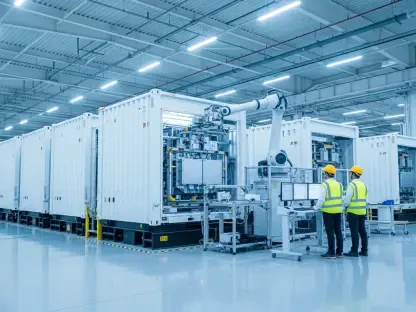In recent years, global investment in clean energy technology has surged, with over $2 trillion injected into developing such resources annually. This trend reflects a critical shift across industries toward sustainable energy systems, driven by a keen awareness of economic, environmental, and geopolitical stakes. Against this backdrop, clean energy tax incentives have emerged as a pivotal tool in shaping energy landscapes worldwide. These incentives are instrumental in bolstering infrastructure and driving innovation, positioning countries advantageously within the global energy marketplace.
The Structure and Impact of Clean Energy Tax Incentives
Clean energy tax incentives are typically structured to offset costs associated with investing in renewable energy technologies. Their mechanisms often include tax credits, rebates, and deductions aimed at making clean energy options financially viable for businesses and individuals. These incentives are designed to stimulate market growth, encourage technological advancements, and reduce reliance on fossil fuels. They play a crucial role in lowering production costs for sustainable technologies, revealing how integrated public policy and technological innovation can spur economic growth and environmental sustainability.
A significant benefit of these incentives is their contribution to accelerating renewable energy adoption. By making clean energy investments appealing, such incentives lead to increased implementation of solar panels, wind turbines, and other green technologies. The widespread use of these technologies reduces dependency on conventional energy sources, aligning closely with both environmental objectives and the pursuit of energy independence. As tangible benefits unfold—ranging from cost savings to job creation—the effectiveness of clean energy tax incentives becomes increasingly evident in the evolving energy landscape.
New Trends and Developments
Emerging trends reveal a dynamic evolution in clean energy tax incentives, reflecting shifts in consumer behavior and technological advancements. Recent legislation has introduced more comprehensive incentive structures, incorporating broader benefits and adaptive strategies to accommodate rapid technological changes. These developments echo an expanding understanding of the need for resilient energy systems and highlight a proactive approach to future-proofing national energy infrastructures.
Industry behavior further shapes these trends, with innovations in energy storage and smart grid technology gaining traction. As the demand for clean energy surges, the incentives have adapted to encourage investments not only in generation but also in efficient energy distribution and management systems. This dynamic adaptation ensures that incentive frameworks remain relevant in a swiftly transforming energy sector, promoting sustained growth and resilience against external challenges.
Applications and Industry Adoption
Real-world applications of clean energy tax incentives span multiple sectors, demonstrating versatility and impact. In manufacturing, companies leverage these incentives to transition from traditional power sources, integrating renewable energy into their operations and reducing carbon footprints. This shift is evident in industries like automotive manufacturing, where solar power and advanced battery technologies are becoming integral components of production processes.
Noteworthy implementations include agriculture sectors that have embraced solar and wind power for irrigation and processing, underscoring the incentives’ applicability across varied economic activities. By facilitating access to affordable clean energy, tax incentives empower diverse sectors to employ innovative solutions, enhancing competitiveness and establishing sustainable business practices.
Challenges and Obstacles
Despite their successes, clean energy tax incentives face hurdles that threaten widespread adoption and effectiveness. Regulatory complexities often pose significant challenges, leading to confusion and hesitancy among potential beneficiaries. Ensuring clarity and accessibility within these regulations is vital for fostering broad-based adoption. In addition to regulatory issues, market obstacles such as fluctuating policy support and financing conditions create uncertainty, often stalling planned investments and projects.
Efforts to navigate these challenges include ongoing policy refinements aimed at simplifying processes and aligning incentives with actual market needs. By addressing these regulatory and market complexities, stakeholders can effectively advance the adoption and optimization of clean energy technologies, mitigating the impact of existing obstacles.
Future Prospects
The future for clean energy tax incentives holds promising potential as technological breakthroughs continue to reshape the energy sector. Anticipated advancements in fields like storage solutions and grid technologies might further enhance the incentives’ effectiveness and appeal, ensuring clean energy remains at the forefront of economic and environmental strategies. Continued collaboration among policymakers, industry leaders, and innovators will be crucial in refining these incentives to promote a sustainable energy future.
With the potential for long-term impacts on global energy dynamics, clean energy tax incentives are poised to play an instrumental role in the strategic development of sustainable energy systems. Their ongoing evolution offers opportunities to capitalize on future energy trends, supporting both national and global objectives in the journey toward comprehensive sustainable integration.
Final Thoughts
In reviewing the landscape of clean energy tax incentives, it becomes clear that they have significantly influenced global energy transitions. Their current state reflects substantial achievements, enhancing economic prospects and technological advancements across industries. As new challenges and opportunities arise, it is essential to evaluate, refine, and adapt these incentives to ensure their continued relevance and efficacy. With a focus on innovation and collaboration, these tax incentives have the potential to affect lasting change within the energy sector, fostering a sustainable and prosperous future.









